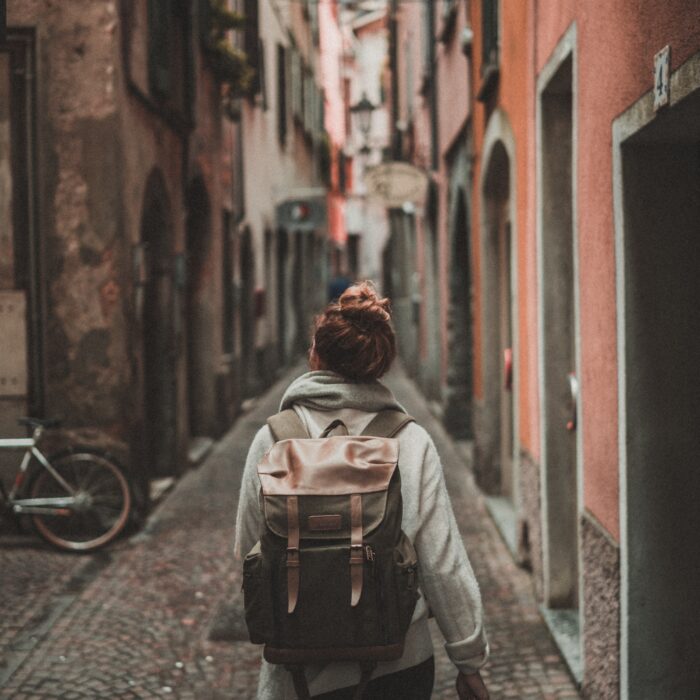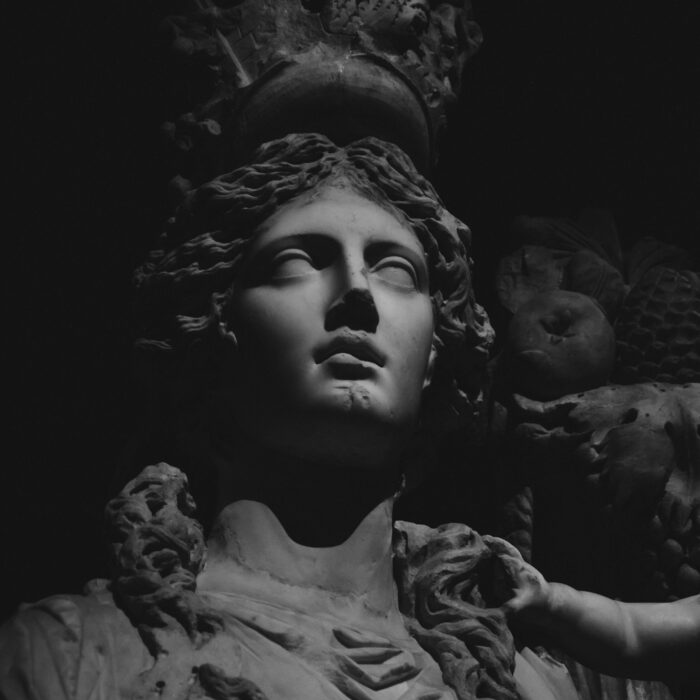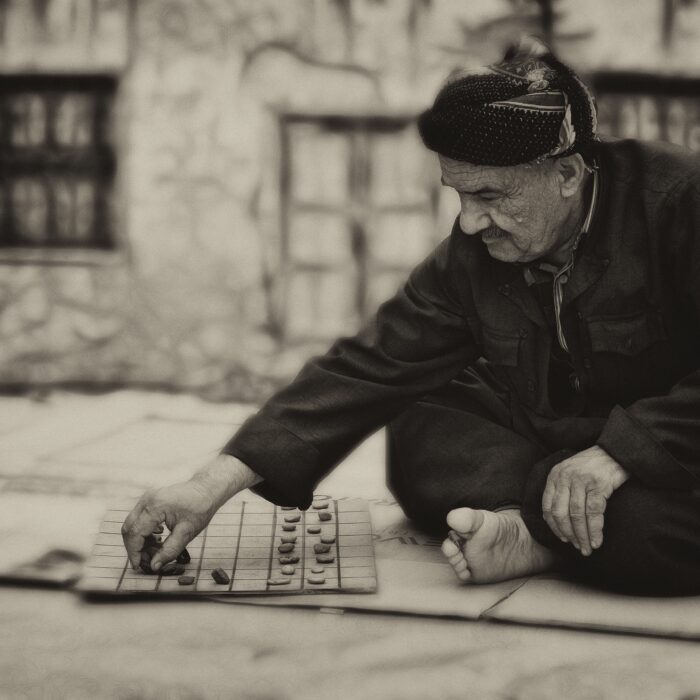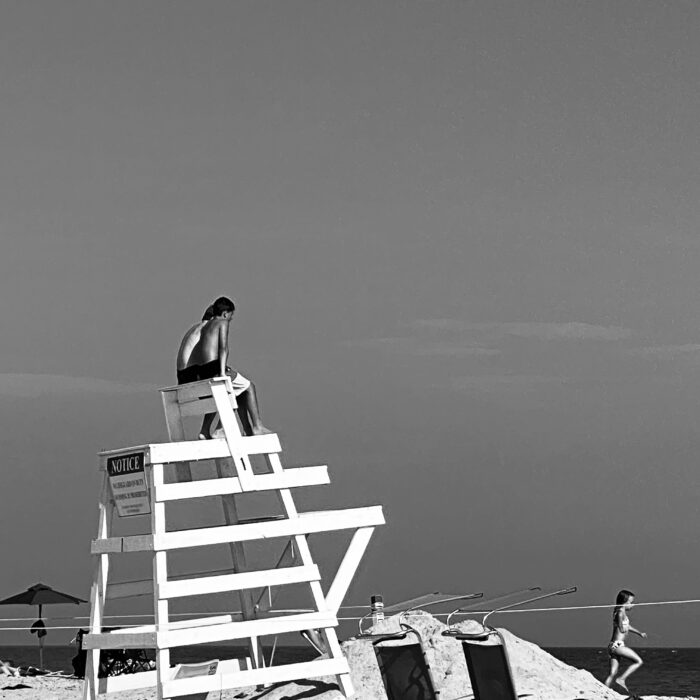You have no items in your cart. Want to get some nice things?
Go shoppingThe train movie is stock-still as I sit, and sip. My first-coffee eyes focus above the window’s transom. If it wasn’t for the glass, I could touch the stencilled white letters T R I T O N on the corrugate wall of the shipping container. This sienna container is stacked on a rusting blue one with spray-painted graffiti ‘I ♥ ’.
Each container is a jumbo Lego brick with its own number, like my passport: BA 27518131. In the hollow of the brick, each hidden product has its own trace identification number.
It’s amazing to consider where the well-used container has been ⎯ how many miles overland, air and sea it travelled and what it carried. How the goods made a difference to factory-workers who produced them, citizens who purchased them or shippers who transported them? If you hammer its metal walls, the sounds and echoes would tell tales.
Burrard Inlet, North-Shore Mountains, and the Port-of-Vancouver frame this face of globalization. The back and forth of urban living requires no lawn-mowing.
Without travel ease, my life might have been circumscribed by the view outside my windowpane. These containers became standardized and circulated the globe like hormones that pulse through the body. We both ‘came of age’ in the sixties. When the diesel engines fire, we scatter the world.
***
Five years ago when the BBC tracked one container’s waybills, I took it as a sign, pulled out old passports and traced my own trajectory. Up until that time I had felt lost in transit, perhaps I could gain agency and ownership of my life path.
In the fall of ’68 I was eighteen and empty, when I left Winnipeg – the distribution centre for Canada. I flew east to University of Toronto as if I were sealed at the point of entry, as they do with dangerous cargo on containers.
In the summer of ’72, a graduate with wages from one year of work, I toured Europe on buses, ships and railcars through England, France, Spain to Crete. Dizzy; my skin absorbed ambient temperatures and smells the way container walls suck up moist winds.
Sixteen months later, when I journeyed to Vancouver I was no longer a virgin. I married, tended the cherry tree and built a pension. For the next eight years, I was as landlocked as the shipping industry in a recession. My career flourished and the containers allowed me to shop the world into my living room.
***
On January 4, 2005, I was in Papua New Guinea reviewing 1980’s photos, when my brother phoned to say Mom had died. I jettisoned across seventeen time-zones to Los Angeles arriving before I left. The cranes at the port opened their arms to my loss, or at least that was how my squeezed heart felt.
Five mourners stood over the grave. Only my brother and I knew her before Alzheimer’s had robbed the story of her life. We were her wantok (Melanesian word meaning one talk or family). As her coffin lowered into the sunny hill in Eden Memorial Park, Sammy Davis Jr. crooned her song, “What Kind of Fool Am I,” on a ghetto blaster. Lifting the shovelful of dirt, my arms remembered the weight of my infant son when I carried him on the plane to visit her. And how he slept in her closet drawer.
I returned to Papua New Guinea, and stayed long enough for unfamiliar notions of ownership to become familiar. If I had been born in one of those tribes, and witnessed that first airplane burst out of the sky and the first white Australian loom towards me, I too would have thought – this is happening for a reason. These ghost ancestors intend the cargo for me and with the help of a shaman I would have grabbed as much as I could. You see my potato peeler, can-openers and shoes disappeared in this country, as did container content.
On the slow passage back to Vancouver, the construction from China’s newest shipping terminal on an artificial island produced deafening noises.
Re-entry into this modern world was an uphill adjustment, nicknamed reverse culture shock. I hissed at Vancouverites leashed to their designer-dressed dogs and shuddered in supermarkets unable to make choices. Only the cadence of trains soothed me. Even their shunting pacified.
***
In these retiring summer days, I am no longer lost. I paddle kayaks along the Pacific coastline. I recover intact running shoes and bathtub toys washed up on unscheduled shores. Ships sometimes hit a storm and containers fall into the sea. Oceanographers use barcodes to track the floating objects and learn about currents.
In winters, I explore precious cultures: hiking mountains with yaks in India, and with Sherpa in Nepal, practicing yoga in Bali and diving with parrotfish in the Caribbean. Containers litter island landscapes. They are used as storage, offices or homes, it not being worthwhile to return them.
Each destination has a delicious moment where my clothes, eyes, and ears are still tuned to home, but my skin knows that I am somewhere else; the weird sense of being suspended betwixt two distinct places. I take in the new ridges, the crevasses, and the heat of the familiar sun. I’m not there and then I am there, me, enveloped by all the adventures that reconfigure me.
***
That BBC container is now a soup kitchen in Africa. Decades ago on safari I vowed to revisit dancing Botswana to laugh again. I should be at the World Cup instead of here. Not done yet, I crave more baggage checks.
Looking out at the port at dusk, the yellow-light blinks on the forklift. A computer operates the two hundred feet high cranes and choreographs the placement of the containers. The concealed contents remain a mystery. As parts of the ship are cleared of incoming containers, reloading begins, and dockside activity becomes frenzied. My window muffles the mechanical beep beeps. A fresh COSCO container faces me through the glass and wonders how many miles overland, air and sea I travelled. I attach this boastful narrative to my waybills. The smirk on my face can’t be contained, knowing they add up to a life story.

About Patricia Morris
Patricia L. Morris is an art school dropout and a Harvard grad. She is a writer, photographer, and a lover of containers.





